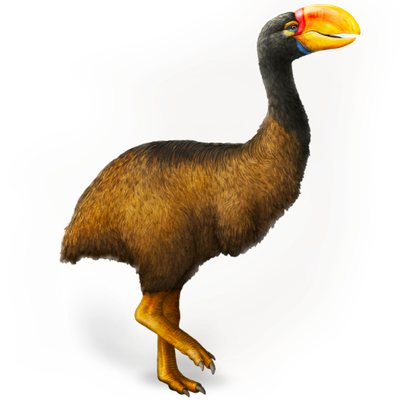Your search returned 12454 results
By Page Type
By Tag
- fish (966)
- blog (696)
- fishes of sydney harbour (401)
- First Nations (299)
- Blog (236)
- AMRI (169)
- archives (164)
- Eureka Prizes (146)
- Aboriginal and Torres Strait Islander (135)
- insect (126)
- Ichthyology (124)
- geoscience (109)
- minerals (102)
- climate change (100)
- podcast (94)
- Fish (91)
- Anthropology (89)
- International collections (80)
- Minerals Gallery (78)
- wildlife of sydney (78)
- Labridae (77)
- frog (74)
- gemstone (70)
- history (64)
- photography (64)
- Mollusca (60)
- gem (59)
- staff (59)
- Birds (56)
- Gems (56)
- Indonesia (56)
- education (56)
- shark (55)
- AMplify (54)
- people (53)
- earth sciences (50)
- past exhibitions (50)
- exhibition (49)
- Gobiidae (48)
- sustainability (46)
- Pomacentridae (45)
- Serranidae (44)
- lifelong learning (42)
- science (42)
- Earth and Environmental Science (41)
- Syngnathidae (41)
- Ancient Egypt (40)
- Bali (40)
- bird (40)
- dangerous australians (40)
-
This month in Archaeology: Did Neanderthals bury their dead?
https://australian.museum/learn/news/blog/this-month-in-archaeology-did-neanderthals-bury-their-dead/Archaeologists in Iraq have discovered a Neanderthal skeleton which appears to have been deliberately buried around 65,000 years ago; Dr Amy Way discusses this recent study.
-
The importance of museums in species discovery: five newly described species
https://australian.museum/learn/news/blog/the-importance-of-museums-in-species-discovery-five-newly-described-species/How is a new species described? And what role do museums play? As highlighted by the recent discovery of the Popa langur (Trachypithecus popa), Natural History Museums are essential in species discovery: find out how, and more about our newly described species by AM scientists and associates.
-
Welcome new fanged friend: A new species of Fanged Frog discovered in Cambodia
https://australian.museum/learn/news/blog/new-species-of-fanged-frog/From the forests of northeastern Cambodia, another frog species new to science is scientifically named!
-
Rare snail species found alive on Norfolk Island after 130 years
https://australian.museum/learn/news/blog/rare-snail-species-found-alive-on-norfolk-island-after-130-years/The tiny, enigmatic snail was last collected in 1889 and is currently listed as extinct by the International Union for Conservation of Nature (IUCN). So, we were very excited to find Nancibella quintalae alive on Norfolk Island!
-
Why we need to get taxonomy right
https://australian.museum/learn/news/blog/why-we-need-to-get-taxonomy-right/Taxonomy and systematics comprise the describing, naming and classifying the natural world. By classifying the natural world, we can understand a species origins and interrelationships. So how do we get it right, and how do we get it wrong? We explore the world of marine invertebrates for more.
-
Australia: home of the (prehistoric) crocs
https://australian.museum/learn/news/blog/australia-home-of-the-prehistoric-crocs/Opalised fossils help tell the story of a small crocodile that lived among the dinosaurs.
-
A rainforest tree by the sea — Who are the pollinators?
https://australian.museum/learn/news/blog/a-rainforest-tree-by-the-sea-who-are-the-pollinators/In Australia there are over 40 species of mangroves; despite their key role in coastal ecosystem function, we know relatively little about their reproductive ecology. Learn more about the pollinators involved, in this recent and pivotal study.
-
Is a deadly disease impacting amphibians on Vietnam’s highest mountains?
https://australian.museum/learn/news/blog/deadly-disease-impacting-amphibians/Scientists from the Australian Museum, Indo-Myanmar Conservation and ZSL London Zoo search for frogs and the world’s worst wildlife disease in the mountains of northern Vietnam.
-
Early Birds diary: A morning in January
https://australian.museum/learn/news/blog/early-birds-diary/The Australian Museum's Early Birds program provides a reduced sensory and supportive environment for visitors on the autism spectrum or those who have other access requirements.
-
New insights into the pink cockatoo, an outback Australian icon
https://australian.museum/learn/news/blog/new-insights-into-the-pink-cockatoo-an-outback-australian-icon/Scientists have undertaken the first genetic assessment of the pink cockatoo, providing insights into how the species has evolved in the harsh inland regions of Australia and how we can conserve this Australian icon.
-
Discover more
2025 Australian Geographic Nature Photographer of the Year
Special exhibition
Free entry
Now open -
Discover more
Unfinished Business
Special exhibition
Free entry
Now open -
Find out more
Surviving Australia
Permanent exhibition
Free entry
Now open![]()
-
Find out more
Burra
Permanent kids learning space
Free entry
10am - 4.30pm![]()
-
Discover more
Minerals
Permanent exhibition
Free entry
Open daily![]()





